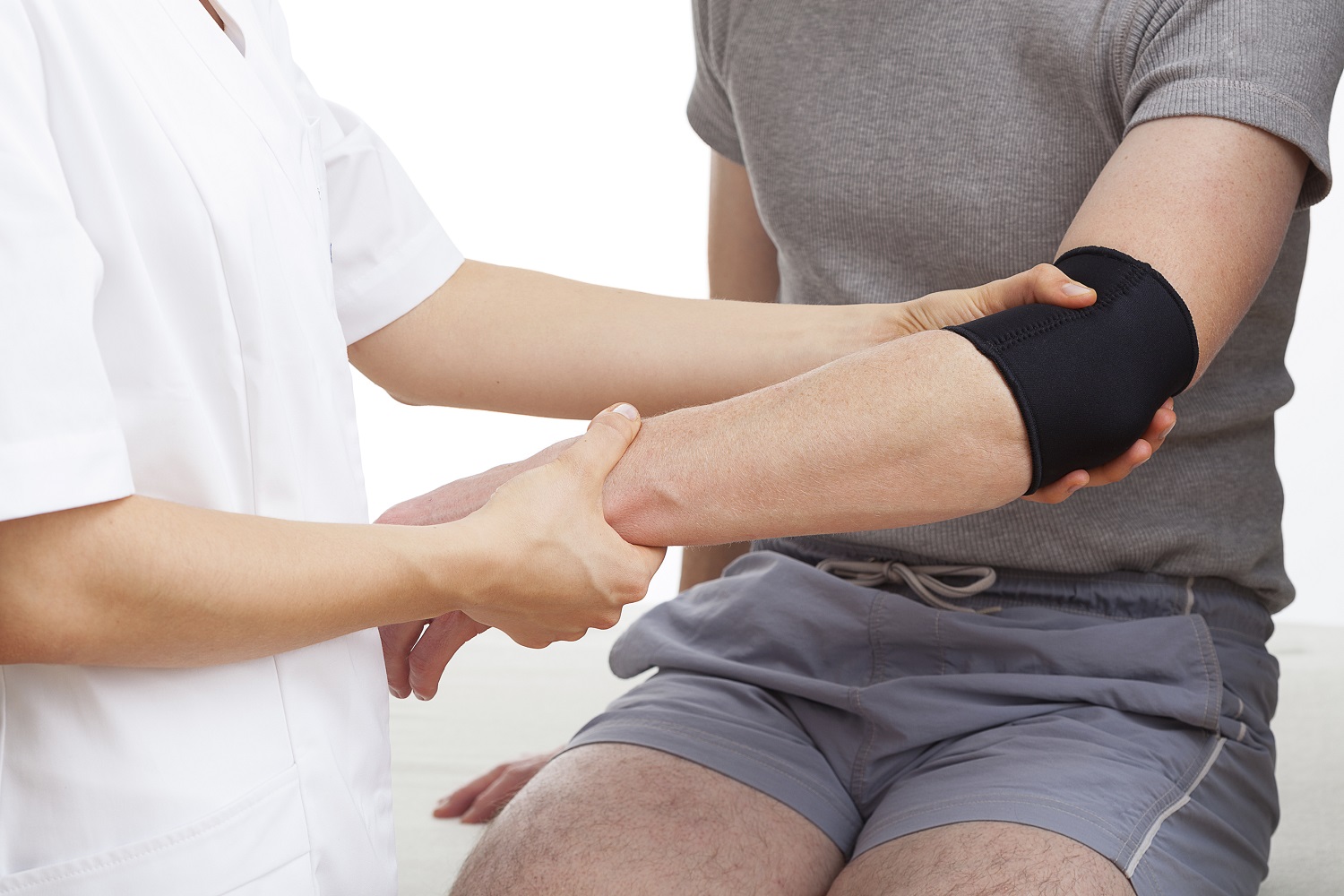Reduce Post-Fracture Stiffness with Physiotherapy
Physiotherapy in Woodbridge
Muscle Stiffness After a Fracture
Experiencing a fracture can lead to significant changes in daily life, not only due to the injury itself but also because of the muscle stiffness that often follows. This stiffness can result from immobilization, inflammation, and the body’s natural healing response. Physiotherapy serves as an effective way to address these issues, helping individuals regain mobility and strength.
Understanding Muscle Stiffness
Muscle stiffness is the sensation of tightness or difficulty moving muscles after an injury. Following a fracture, various factors contribute to this stiffness:
- Immobilization: When a fracture occurs, immobilization is often necessary to ensure proper healing. While this is crucial for the fracture itself, it can lead to muscle atrophy and stiffness around the injury site.
- Inflammation: The body reacts to injury with inflammation, which can cause swelling and discomfort in the surrounding muscles and tissues, limiting movement.
- Pain: Discomfort from the fracture can lead to avoidance of movement, creating a cycle of stiffness and reduced range of motion.
The Importance of Physiotherapy in Woodbridge
Physiotherapy plays a vital role in reducing muscle stiffness and promoting recovery following a fracture. The goals of physiotherapy include:
- Restoring Range of Motion: Helping individuals regain flexibility in the affected area.
- Reducing Pain: Alleviating discomfort associated with muscle stiffness.
- Building Strength: Strengthening muscles to support the injured area and prevent future injuries.
- Improving Functionality: Assisting individuals in returning to daily activities with greater ease.
Techniques in Physiotherapy
Physiotherapists utilize a variety of techniques to help manage muscle stiffness effectively. Each technique targets specific aspects of recovery and contributes to overall rehabilitation.
Manual Therapy
Manual therapy involves hands-on techniques performed by physiotherapists to enhance mobility and alleviate stiffness. Key components include:
Soft Tissue Mobilization
This technique involves applying pressure to soft tissues such as muscles and fascia. Benefits include:
- Reducing Tension: Helps relax tight muscles and promotes blood circulation.
- Improving Flexibility: Enhances the overall flexibility of the affected area, aiding in recovery.
Joint Mobilization
Joint mobilization consists of gentle movements applied to joints to improve their range of motion. This can include:
- Oscillatory Techniques: Gentle back-and-forth movements to increase joint mobility.
- Sustained Stretching: Holding a position to encourage the joint to relax and improve its range.
Active Range of Motion Exercises
These exercises encourage patients to move the affected area actively, promoting circulation and flexibility. Common active range of motion exercises include:
Gentle Stretching
Focusing on the muscles around the fracture site can enhance flexibility. Stretching should be done slowly and gently to avoid discomfort.
Functional Movements
Engaging in movements that mimic daily tasks can help improve practical mobility. Examples include:
- Reaching: Simulating reaching for objects to improve shoulder and arm mobility.
- Bending: Practicing bending motions to regain hip and knee flexibility.
Passive Range of Motion Exercises
In cases where the patient cannot actively move the affected area, physiotherapists may assist with passive range of motion exercises. These exercises include:
Assisted Movement
The therapist gently moves the joint through its range of motion. This helps maintain flexibility and reduce stiffness without requiring active effort from the patient.
Gradual Progression
Increasing the complexity of movements as the patient’s comfort level improves encourages ongoing recovery. This may involve:
- Progressively Challenging Positions: Adjusting the angles and positions used during passive exercises.
- Integrating New Movements: Introducing different movements to promote comprehensive recovery.
Strengthening Exercises
Once some mobility is restored, physiotherapists can introduce strengthening exercises to rebuild muscle strength. These may involve:
Isometric Exercises
These exercises engage muscles without moving the joint, helping maintain strength while minimizing stress on the healing bone. Examples include:
- Tightening the Quadriceps: Contracting the thigh muscles while seated or lying down.
- Glute Squeezes: Engaging the glute muscles without moving the hips.
Progressive Resistance Exercises
Gradually increasing resistance as strength improves can enhance overall stability. This can include:
- Resistance Bands: Using bands to add resistance to movements.
- Light Weights: Incorporating light weights as strength builds to further challenge the muscles.
Consistency in Rehabilitation
Consistency is key to effectively reducing muscle stiffness. Adhering to physiotherapy sessions and performing prescribed exercises at home can significantly enhance recovery outcomes. Important points include:
Following a Routine
Patients are encouraged to establish a structured rehabilitation program. This consistency helps ensure ongoing progress and improvement in mobility.
Communicating with the Therapist
Open communication with the physiotherapist is crucial. Patients should report any changes in symptoms or difficulties encountered during exercises. This feedback allows for adjustments to the treatment plan, optimizing recovery.
Additional Strategies for Managing Muscle Stiffness
Alongside physiotherapy, various strategies can help manage muscle stiffness after a fracture. These include:
Heat and Cold Therapy
Utilizing heat and cold therapy can provide additional relief from stiffness.
Heat Therapy
Applying heat to the affected area before exercises can:
- Promote Relaxation: Helps relax muscles and increase blood flow, making it easier to perform exercises.
- Enhance Flexibility: Warm muscles are generally more pliable, reducing the risk of injury during movement.
Cold Therapy
Using ice packs after activities can help:
- Reduce Inflammation: Cold therapy can alleviate swelling and discomfort after exercise.
- Numb Pain: It provides immediate relief for soreness, making subsequent activities more manageable.
Hydration and Nutrition
Staying well-hydrated and maintaining a balanced diet supports overall recovery. Key points include:
Hydration
Drinking enough water is essential for muscle function and recovery. Dehydration can exacerbate stiffness, making it important to:
- Monitor Fluid Intake: Aim for adequate hydration throughout the day.
Nutrition
A diet rich in vitamins and minerals supports healing. Important nutrients include:
- Calcium and Vitamin D: Essential for bone health, helping to promote recovery and strength.
- Protein: Important for muscle repair and rebuilding.
Staying Active
Engaging in light physical activities, as advised by a healthcare professional, can help maintain overall fitness and promote healing. Recommended activities may include:
Walking
Gentle walking enhances circulation and reduces stiffness. It encourages movement without placing excessive strain on the healing area.
Low-Impact Exercises
Incorporating low-impact activities such as swimming or cycling provides cardiovascular benefits without stressing the healing fracture. These activities can help maintain fitness levels while allowing for gradual recovery.
Psychological Considerations
Recovering from a fracture can be mentally challenging. Addressing psychological well-being is also important in the rehabilitation process. Considerations include:
Setting Realistic Goals
Establishing achievable milestones can help maintain motivation. Breaking down the recovery process into smaller, manageable steps can make the journey feel less overwhelming.
Seeking Support
Engaging with friends, family, or support groups can provide emotional encouragement. Sharing experiences and challenges with others can alleviate feelings of isolation and enhance motivation.
Monitoring Progress
Tracking progress throughout the rehabilitation process can provide valuable insights into recovery. Patients should consider:
Keeping a Journal
Maintaining a record of exercises performed, pain levels, and overall progress can help identify patterns and areas needing improvement. This journal can also facilitate discussions with physiotherapists about effective strategies.
Regular Assessments
Scheduled assessments with a physiotherapist can help evaluate progress and adjust treatment plans as necessary. Regular check-ins ensure that the rehabilitation process stays on track and addresses any emerging concerns.
Final Thoughts
Reducing muscle stiffness after a fracture is a critical aspect of the recovery process. Physiotherapy provides targeted techniques and exercises to promote healing and enhance mobility. If you or someone you know is navigating recovery from a fracture, consider reaching out Vcare Physio & Rehab to explore how a personalized rehabilitation plan can facilitate a successful journey toward recovery. Taking proactive steps in managing muscle stiffness can lead to improved outcomes and a return to normal activities.






